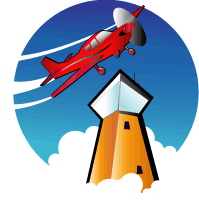 |
||||||||
| Issue Number 264 |
August
2001
|
|||||||
|
P.O. Box 189, Moffett Field, CA 94035-0189 |
||||||||
|
|
||||||||
 |
||||||||
| Issue Number 264 |
August
2001
|
|||||||
|
P.O. Box 189, Moffett Field, CA 94035-0189 |
||||||||
|
|
||||||||
Fuel
Considerations for Multi-Crew Operations
Fuel starvation is a potential hazard to multi-crew as well as single-pilot operations. An air carrier line check Captain describes what can happen when a task that is usually automated in this case fuel balancing must be performed manually in a cockpit climate punctuated by radio calls and training requirements.
The need to manage concurrent tasks is an everyday part of cockpit operations that can become unbalanced by interruptions and distractions. ASRS Directline Issue 10, available on the ASRS web site (http://asrs.arc.nasa.gov), offers a summary of strategies for reducing vulnerability to task management errors.
Take
two company B-767s bound for cities on the same coast, put them
on the same ramp, swap one aircraft's destination with the other's,
and what have you got? A set-up for a fuel loading error. More
from this Captain's report (Abbott and Costello didn't write this,
honest):
 and controllers both ignore AIM 4-3-2 that states, "it
is not necessary to request permission to leave Tower frequency."
Almost every day I fly some pilot has to take up valuable air
time making multiple requests to change frequencies at times
when everyone is just too busy to bother with the unnecessary
call. At other times the Tower actually gives permission without
the request, reinforcing the incorrect idea that permission
is required... Help!
and controllers both ignore AIM 4-3-2 that states, "it
is not necessary to request permission to leave Tower frequency."
Almost every day I fly some pilot has to take up valuable air
time making multiple requests to change frequencies at times
when everyone is just too busy to bother with the unnecessary
call. At other times the Tower actually gives permission without
the request, reinforcing the incorrect idea that permission
is required... Help!In
the words of the Aeronautical Information Manual (AIM):
AIM, Section 3, 4-3-2(a). "...It is a good operating practice to remain on the Tower frequency for the purpose of receiving traffic information. In the interest of reducing Tower frequency congestion, pilots are reminded that it is not necessary to request permission to leave the Tower frequency once outside of Class B, Class C, and Class D surface areas..."
U.S. flight crews must exercise extra vigilance when operating internationally into airports where accented English, and the use of native languages by air traffic controllers, can create confusion and uncertainty about ATC instructions. A recent ASRS report describes how an alert flight crew relied on "gut instincts" and prior experience to avoid a ground collision:
We begin with the First Officer's concise account:
The Captain's report added this clarifying information
Even this crew's commendable caution could not avoid a ground conflict with the landing aircraft on the parallel runway.
Years ago CALLBACK printed a report from a student pilot who was holding in position on the runway for takeoff when he received this clearance: "Cleared for takeoff, left turn to 180°." The nervous student understood this instruction to mean, "turn left 180° immediately, while still on the runway, and take off." He obligingly completed a short-field takeoff in the opposite direction (safely, we're happy to add).
Another literal-minded student pilot recently submitted this report to ASRS:

Our reporter doesn't say whether Tower issued an altitude restriction with the low approach clearance. If not, Air Traffic Control Handbook 7110.65M, section 3-10-10, mandates a minimum 500-foot altitude restriction for low approaches above an airport.
| ASRS Recently Issued Alerts On... |
|---|
| Non-standard hold lines at a Midwest airport |
| Inflight activation of a G-IV stall barrier system |
| Fokker-100 loss of rudder control on short final |
| Uncoordinated Mode C testing by maintenance at a FBO |
| An airport's ground holding procedures for landing aircraft |
|
|
|
|---|---|
| Air Carrier/Air Taxi Pilots |
2,232
|
| General Aviation Pilots |
729
|
| Controllers |
81
|
| Cabin/Mechanics/Military/Other |
193
|
| TOTAL |
3,235
|